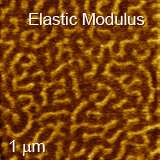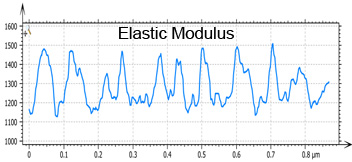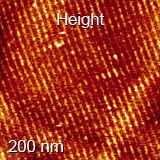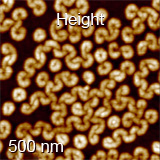NT-MDT in the USA. News Letter #4, March 2015
10.03.2015
 Printable version Printable version |
||
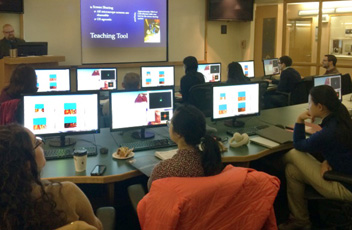 |
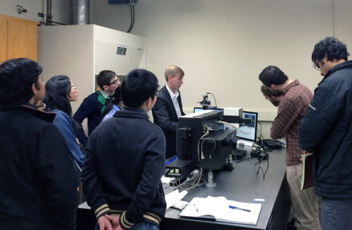 |
|
| Photos from the CMU Workshop: The lecture room (left) and the live demo of the NT-MDT Spectra system (right). | ||
| NT-MDT AFM-Raman Workshop in Carnegie Mellon University | ||
| NT-MDT America Inc was delighted to conduct an AFM-Raman workshop at the Carnegie Mellon University (CMU), Department of Materials Science and Engineering on February 19th-20th. The workshop was attended by more than 20 researchers from CMU and local universities and industry, who are involved in different application areas. The event was organized in a modern microscopic facility with a lecture room equipped with video screens allowing on-line monitoring of the AFM experiments conducted in the labs. In addition to the lectures, in which the recent advances in high-resolution imaging and AFM quantitative studies of local mechanical and electric properties as well as in AFM-Raman applications were highlighted, the participants enjoyed live demonstration sessions of NEXT AFM and AFM-Raman microscopes. For trial experiments, the researchers provided various samples, which include carbon based materials, polymers, composites, piezo-responsive compounds, semiconductors, etc. |
The workshop was organized with the enthusiastic support of Adam Wise, Scanning Probe and Facilities Specialist at CMU. He mentioned the following: “We have quite a few NT-MDT instruments at Carnegie Mellon. Our real workhorse tool is a Solver NEXT, and our undergraduate laboratories use Solver Nano systems. We've just installed a Spectra system with the Hybrid Mode Controller, which offers a lot of new capabilities for our center. I think there's a general perception about AFM that it's just for surface topography. I'm glad to have NT-MDT come here and demonstrate the capabilities of these instruments to reveal so much more information about our samples”. The workshops at our customers’ sites in different Universities in the USA are becoming a fruitful collaborative exchange helping our customers to optimize their experiments, to expand the capabilities of nanoscale characterization and to learn in practice amazing examples of AFM and AFM-Raman applications. Similar NT-MDT workshops are planned through 2015 at different customers’ sites throughout USA. |
|
| QNM with HybriD Mode | ||||
| Ongoing developments in quantitative nanomechanical (QNM) studies with the HybriD Mode have been publicized during the recent weeks in our latest Webinar and NT-MDT Workshops in Pittsburg (USA) and Frankfurt (Germany). Two major advances have been achieved during a thorough verification of quantitative mapping of elastic modulus on series of polymers. The first finding demonstrates that the values of the elastic modulus of polymers, which are extracted from the force curves during imaging of blocks of neat polymers, correlate well with their macroscopic data. This justifies the use of modulus mapping for compositional imaging of multicomponent polymer materials. The second result is the routine high spatial resolution of modulus mapping, which was achieved in studies of a number of polymers with lamellar morphology. Below, we present the elastic modulus map of diblock copolymer of polystyrene (PS) and poly(methyl methacrylate) - PMMA, in which the brighter lamellae correspond to high-modulus PS blocks. |
The elastic modulus spatial variations, as seen from the cross-section underneath the map, are in the 20-40 nm range that practically coincides with an AFM tip apex. |
|||
| From the Laboratories | |||||
| In expanding AFM applications we are exploring the use of Frequency Modulation (FM) mode for ambient condition studies. The monitoring of the frequency shift of an AFM probe, which interacts with a sample, and employing it for feedback is the essence of this resonant oscillatory mode. FM is systematically applied in UHV AFM studies and, so far, it has limited applications in studies in air. Our intention is to verify the capabilities of this mode compared with those of the more common amplitude modulation. |
The hope that tracking of the resonant frequency changes enables studies of soft and weakly bonded surface structures, which are brushed away by an AFM probe in other modes. The stable tracking of the frequency shifts when the tip-sample interactions are attractive, net attractive and repulsive has been established in the first experiments. The FM images, which were obtained in the fully attractive mode on the lamellae of semifluorinated alkanes on graphite and in the repulsive mode on the “donuts” of semifluorinated alkanes on mica, are shown below. | ||||
|
|||||
| Forthcoming NT-MDT Events: | ||
| March 22-24: NT-MDT will be participating in the exhibition at ACS Spring meeting in Denver, CO: Booth #1000 |

